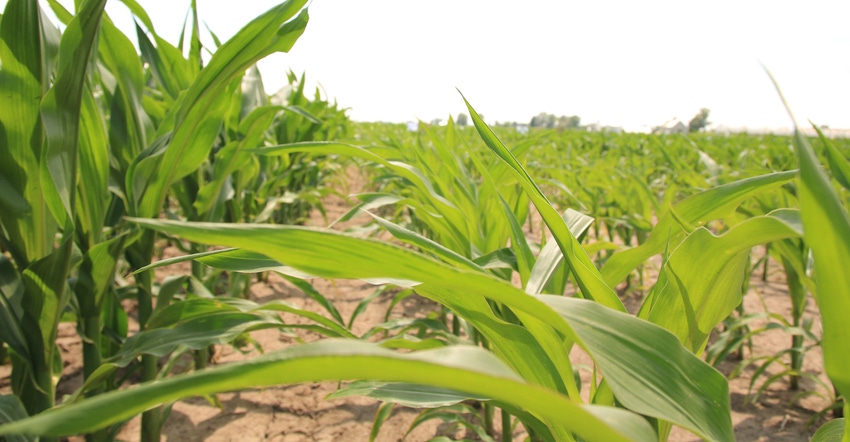
In a late planting year, the go-to strategy for maximizing yield is to plant more soybeans and corn per acre. That means narrower rows — with more distance between plants in a row — and replants where necessary.
Fred Below, University of Illinois crop physiologist, says if rain delays planting by a month or so, when plants in narrow rows break through the ground in late May and early June, they’re reaching all the sunlight they can before the longest day of the year, June 21. Crops are also more likely to overcome weed pressure at higher populations.
Replants and crops in cold spots where water pools won’t be uniform compared with taller hybrids planted in the rest of a field; still, using narrow, 15- to 20-inch rows is one of the most-trusted tools in the progressive grower’s toolbox to maximize yield potential with a majority of acreage early on, Below says. He notes that the average grower in Illinois goes with 30-inch rows.
“The advantage of a late plant is that the crop comes up rapidly and uniform, and anybody that has high yield is going to tell you, ‘Every plant has to come up at the same time,’ so we’re blessed in that one way in most of our fields,” Below says. He explains that high moisture and heat helped establish uniform stands this year, but in field trials, progressively managed narrow-row strips came up stronger and taller by late June than fields that were managed conventionally.
Conventional management includes a nitrogen application of 180 pounds, but for the Champaign County trial site, phosphorus was left out because soil tests concluded it wasn’t necessary. Progressively managed strips at the site included 100 pounds of P205 phosphorus and a starter fertilizer. Researchers put down sulfur and West Central’s Levesol zinc as well, and plan to apply fungicide — all tactics left out of the conventional management system.
Resist temptation
“The temptation this year for some growers is to go light on inputs,” says Scott Foxhoven, one of Below’s research assistants, who says in-season fertility is better in the progressively managed stands. “But when you do that, you’re capping your yield potential. If that crop is seeing it doesn't have a lot of fertility there, it can only get a maybe 200-bushel yield. You can only lose yield from here with un-ideal weather and diseases later into the season.”
The trials that Below’s team has run this season aren’t complete, as they have yet to be harvested. Still, the benefits of progressive management put corn two growth stages ahead of corn managed with average techniques in late June. By the time they spray fungicide near the VT growth stage, a higher-than-average yield potential will be preserved through what could be a disease-heavy late season.
“For the future, I would tell growers that they ultimately are going to have to think about switching to narrower rows,” Below says. “They’re going to have to do a better job of fertilizing, banding their fertility throughout the season — no doubt about it.” He adds that hybrids are improving faster than management techniques deployed in the field. “They’ve got to get the crop off for a good start, but starter is not finisher. There’s a lot of yield potential that we’re not quite realizing by the end of the season.”

REALIZE POTENTIAL: Root growth and shoot height are helped along by micronutrient applications, resulting in a taller stand with more yield potential throughout the season, Scott Foxhoven says.

Another research assistant, Eric Winans, notes narrow rows are a tactic that requires supplemental strategies for a hybrid to realize its full yield potential.
“If you’re going to narrow-row corn, you’re going to have to go with a high density to see the advantage of the narrow rows, and you’re going to have to have a racehorse, responsive-type hybrid that’s really going to thrive there,” Winans says.
Below says population increases are important for increasing yields, but crowding results in poorer root growth.
“As population goes up, the size of each root system goes down, and as that happens, then things like in-furrow treatments that make nutrients more available, better placement of fertilizer, micronutrients — these become way more important,” Below concludes.
About the Author(s)
You May Also Like




